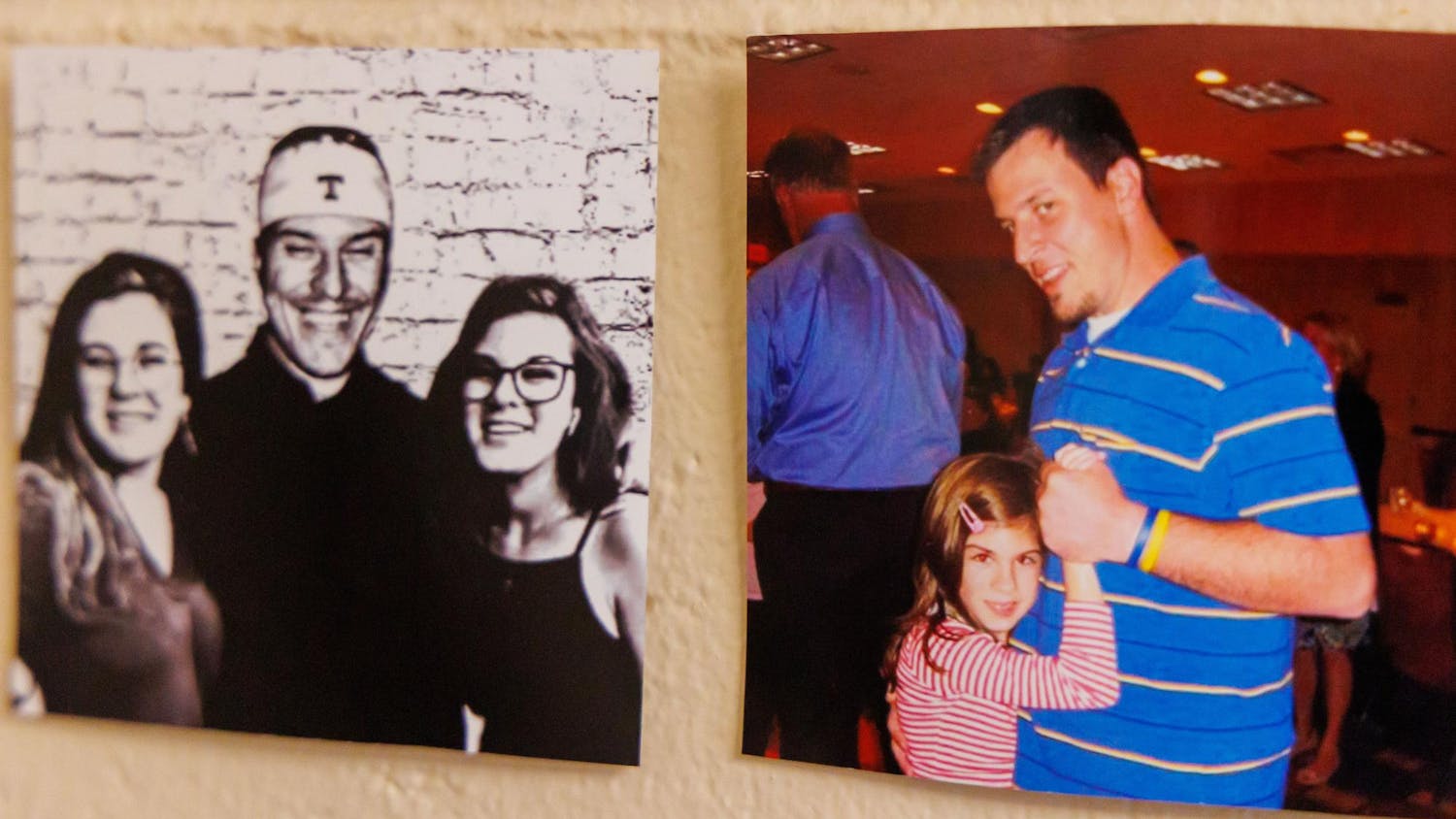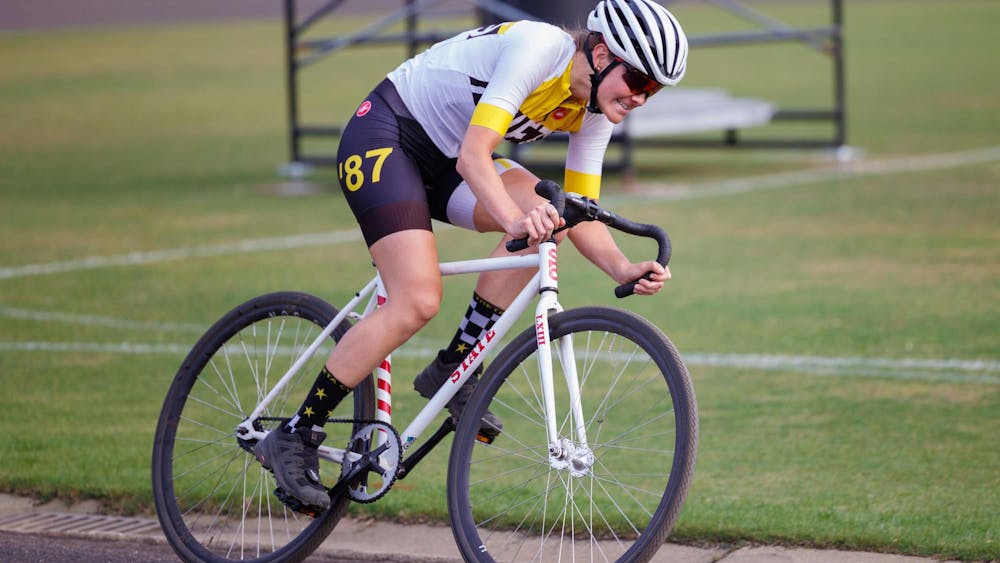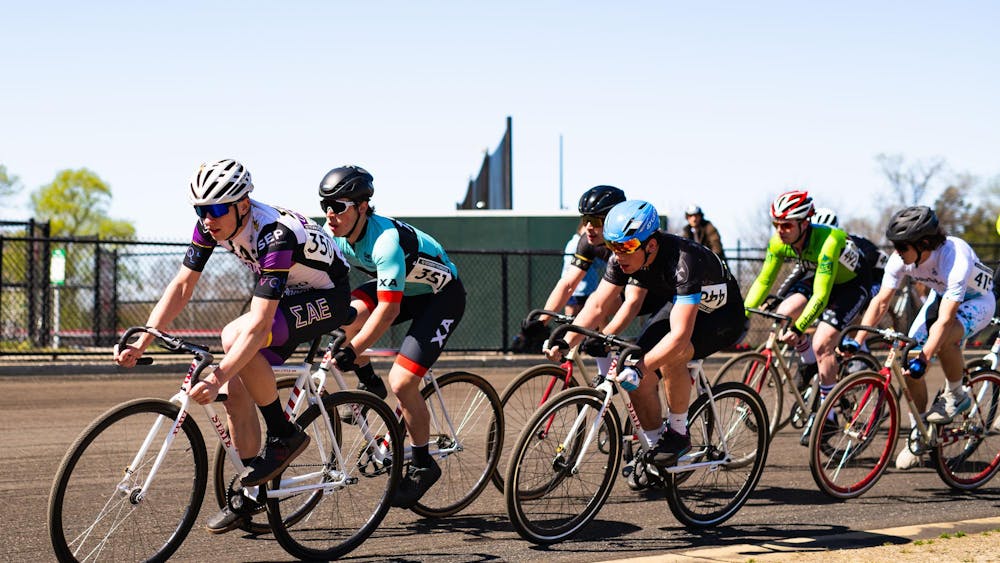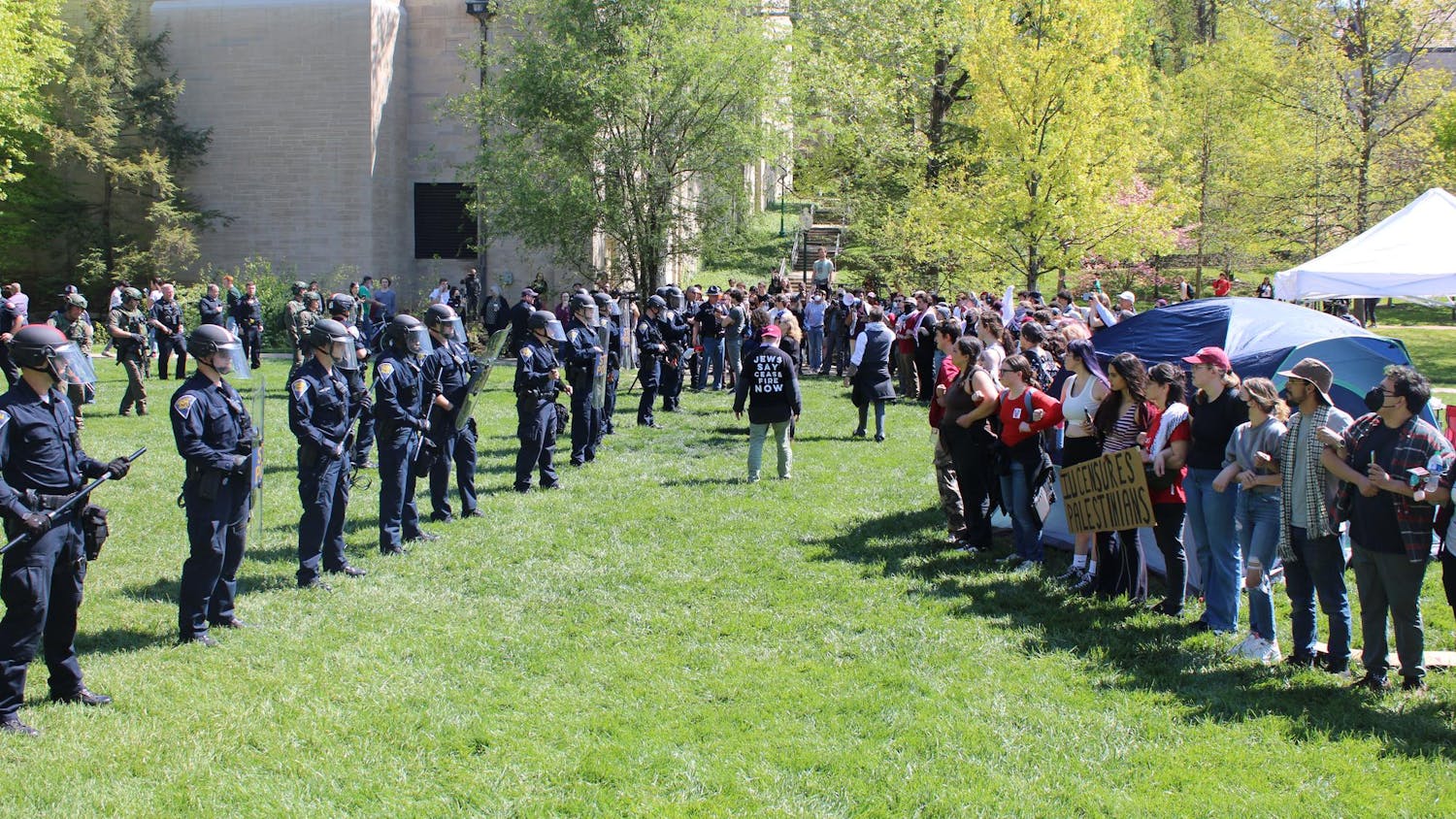Imagine seeing yourself through strangers' eyes and realizing just how you look to them. These strangers notice everything. They are trained to see every detail, every curve, every wrinkle, every muscle, every flaw. They will see the birthmark shaped like Italy on your left shoulder, the scar on your right knee, the remnant of a fall off your bike when you were five. They will notice if the early morning rain frizzed your hair or if Thanksgiving added a few extra pounds to your belly.\nBut these strangers will not judge you. They stare for art. \nAnd those being stared at are accustomed to the situation. They've hired themselves out as nude models for the IU School of Fine Art. During their working hours, art students analyze, study and, of course, draw them. For aspiring artists trying to fine-tune their skills, nude models are not only a learning tool, but a necessity. \nJunior Sara Irani has helped satisfy the art school's ever-growing need for models. A linguistics major at IU, she has worked as a nude model for the School of Fine Arts since her sophomore year after she responded to an ad in the Indiana Daily Student. Now she's paid $8.50 an hour to sit, stand or lie perfectly still for hours at a time.\n"It can get kind of boring. You have to sit in a pose for three hours and not move. You have to be really entertaining in your head," Irani said. "I have done everything from trying to meditate and not think at all to let me see if I can name one song for every letter of the alphabet in my computer."\nIrani poses in front of 18 to 25 students on a regular basis. After slipping into a white robe in a small dressing room, the professor introduces her to the class. She takes her place at the center of the studio, drops the robe and strikes a pose. Now she cannot move -- not even to scratch an itch. After about 20 minutes, she takes a short two or three minute break to stretch and regroup. The professor tapes her position on her hands and feet. After the break, she will sit for another period of time in the same pose. \nIt is the monotony of modeling, Irani said, that is the most difficult. As each minute passes, her muscles tighten a little more. Her arms grow tired. Her head will start slipping to one side. While many models have difficulties learning to find positions that they are able to hold for long sessions, Irani's experience has taught her well.\n"You kind of learn that cocking my head to this side feels OK now," Irani said, tilting her head slightly to the right, "but in five minutes it will really suck. You become more aware of your body."\nThe standing pose tends to be the most difficult position for models, Irani said. Gravity pulls on the leg muscles, tiring them. Without the ability to sit or move for hours, Irani said the trick to lasting through a standing pose lies in the knees. \n"It is real important not to lock your knees," she said. "You will pass out. Your blood can't circulate. You just kind of drop after a few minutes, which is normally not so cool to do, especially if you are naked."\nWhile a standing pose could potentially leave a model floored, if she is asked to pose lying down "it is like cake," Irani said, laughing. "I mean, I have actually fallen asleep."\nWhether passed out or napping, what Irani is really doing is helping students master the art of drawing true form. \nOne such student is senior studio art major Stephanie Stanley.\n"It is much more realistic," Stanley said while balancing her drawing portfolio in her arm. "A mannequin is ideal human form, but it isn't representative of what a woman really looks like."\nTim Kennedy, a visiting assistant professor at the fine arts school, said the use of nude models is a historic tradition of Western art since the Renaissance. It is noticeable in art such as Jacques-Louis David's "The Tennis Court Oath" from 1791, in which the artist performed a complete nude compositional study for the painting. With every model unique and every pose incorporating different muscles and bones, these interactions become a perfect tool for professors to help students learn to appreciate true form.\n"Clothing on a model disguises the form of the body," Kennedy said. "For a person to understand how clothing drapes over a body, he or she has to know the form of the body itself."\nToday, Irani helps artists gain this appreciation of form by modeling during closed classes, sessions open to the general public and private one-on-one sittings with professors. \n"I don't think a lot of people would be comfortable enough to do it," she said, looking at a tattoo of a Dharma wheel on her right hip. "So I might as well, since I am. (The artists) are doing it to draw realistic human form. So, you know, they aren't critiquing anything."\nDespite this, she admits having her body transformed into charcoal or pastels or paint on a canvas can come as a shock. Irani said she typically chooses not to look at the drawings or paintings after a modeling session.\n"It is one thing to look at yourself in a picture, but another to like have someone interpret you on paper," Irani said. "But you see when you are modeling other pictures of other work that have been done. It is real easy to be comfortable because you see a million different, you know, figures just on the wall from various projects."\nWhile she may not enjoy seeing herself as a work of art, Irani said modeling has given her a new appreciation for the beauty of the true human form. It is this understanding that Irani hopes to help aspiring artists learn as she continues modeling during her remaining time at IU. \n"I hear a lot of people say, 'I can't even imagine being naked in front of all those people,'" Irani said, forming a thin smile. "They talk about it like it makes you really vulnerable. I think modeling will help you realize that people who are looking at the artistic aspect of the figure aren't looking at it as, 'Oh, her thighs are too big,' or, 'Her face doesn't look quite right.' It is very much, 'Is the humanity captured there?'" \n-- Contact staff writer Katie O'Keefe at kjokeefe@indiana.edu.
Mastering the artistic human form
Get stories like this in your inbox
Subscribe





